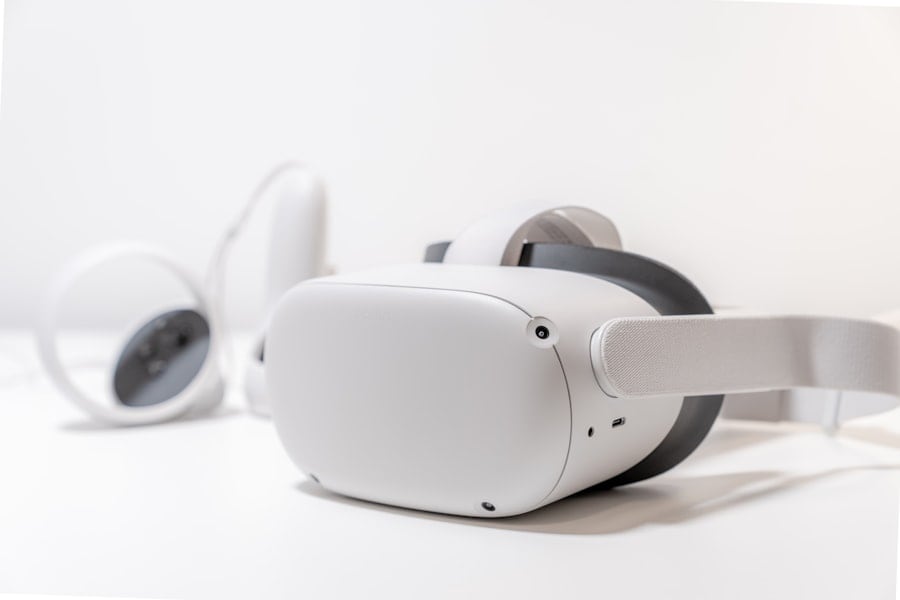The concept of virtual labs has undergone significant transformation since its inception, evolving from rudimentary simulations to sophisticated, interactive environments that closely mimic real-world laboratory experiences. Initially, virtual labs were primarily used as supplementary tools, providing students with basic simulations of scientific experiments. These early iterations often lacked the depth and interactivity necessary to engage students fully.
However, as technology advanced, so did the capabilities of virtual labs. The integration of 3D graphics, real-time data analysis, and immersive environments has allowed for a more authentic representation of scientific processes, enabling students to conduct experiments that would be impractical or impossible in a traditional lab setting. The rise of the internet and advancements in computing power have further accelerated the evolution of virtual labs.
With the advent of cloud computing, students can now access high-quality virtual lab experiences from anywhere in the world, breaking down geographical barriers that once limited access to quality STEM education. Institutions began to recognize the potential of these platforms not only as a means to enhance learning but also as a way to provide equitable access to resources. As a result, virtual labs have become an integral part of STEM curricula across various educational levels, from K-12 to higher education, allowing for a more inclusive approach to science education.
Key Takeaways
- Virtual labs have evolved to become an integral part of STEM education, providing hands-on learning experiences in a digital environment.
- Advantages of virtual labs include accessibility, cost-effectiveness, and safety, while limitations include the lack of physical interaction and equipment limitations.
- Incorporating virtual labs into traditional classroom settings can enhance learning experiences and provide opportunities for personalized and self-paced learning.
- Virtual labs play a crucial role in remote and distance learning, allowing students to access practical experiments and simulations from anywhere.
- Virtual labs can enhance engagement and collaboration through features such as real-time data sharing and interactive simulations.
- Virtual labs have a positive impact on student learning and performance, improving understanding of complex concepts and increasing retention of knowledge.
- Future developments and innovations in virtual lab technology aim to improve realism, interactivity, and customization for diverse learning needs.
- Overcoming challenges and ensuring accessibility in virtual labs require addressing issues such as internet connectivity, device compatibility, and accommodating students with disabilities.
Advantages and Limitations of Virtual Labs
Virtual labs offer numerous advantages that enhance the learning experience for students in STEM fields. One of the most significant benefits is the ability to conduct experiments without the constraints of physical resources. Students can explore complex scientific concepts through simulations that allow for repeated trials without the fear of wasting materials or facing safety hazards.
This flexibility encourages experimentation and fosters a deeper understanding of scientific principles. Additionally, virtual labs often provide instant feedback and data analysis tools, enabling students to learn from their mistakes in real-time and adjust their approaches accordingly. However, despite their many advantages, virtual labs also come with limitations that educators must consider.
One notable drawback is the potential lack of hands-on experience that traditional labs provide. While virtual simulations can replicate many aspects of real experiments, they may not fully capture the tactile and sensory experiences associated with physical lab work. This gap can lead to challenges when students transition to real-world applications where practical skills are essential.
Furthermore, the reliance on technology can create disparities in access; students from underprivileged backgrounds may lack the necessary devices or internet connectivity to fully engage with virtual lab platforms.
Incorporating Virtual Labs into Traditional Classroom Settings

Integrating virtual labs into traditional classroom settings requires careful planning and a strategic approach to ensure that both modalities complement each other effectively. Educators can begin by identifying specific learning objectives that can be enhanced through virtual experimentation. For instance, a biology teacher might use a virtual lab to simulate genetic crossbreeding before conducting a physical experiment with plants.
Moreover, teachers can leverage virtual labs to facilitate differentiated instruction. By providing students with access to various simulations tailored to their skill levels, educators can cater to diverse learning needs within the classroom.
For example, advanced students might explore more complex experiments while those who require additional support can engage with simpler simulations. This flexibility not only promotes individualized learning but also encourages collaboration among peers as students share insights and strategies derived from their virtual lab experiences.
The Role of Virtual Labs in Remote and Distance Learning
The COVID-19 pandemic highlighted the critical role that virtual labs play in remote and distance learning environments. As educational institutions shifted to online formats, many educators turned to virtual labs as a means to maintain engagement and provide meaningful learning experiences for students. These platforms allowed for continuity in STEM education, enabling students to conduct experiments and explore scientific concepts from home.
The ability to access high-quality simulations ensured that learning did not come to a halt during periods of isolation. In addition to maintaining educational continuity, virtual labs have also expanded opportunities for collaboration among students in remote settings. Many platforms incorporate features that allow students to work together on experiments in real-time, fostering teamwork and communication skills essential for success in STEM fields.
This collaborative aspect is particularly beneficial in distance learning scenarios where social interaction may be limited. By engaging in shared virtual lab experiences, students can build connections with their peers while deepening their understanding of scientific concepts.
Enhancing Engagement and Collaboration in Virtual Labs
Engagement is a crucial factor in effective learning, and virtual labs have been designed with this principle in mind. Many modern platforms incorporate gamification elements, such as challenges, rewards, and leaderboards, which motivate students to participate actively in their learning process. By transforming traditional lab activities into interactive games or competitions, educators can capture students’ attention and encourage them to explore scientific concepts more deeply.
For instance, a chemistry simulation might present students with a series of challenges where they must solve problems related to chemical reactions to progress through levels. Collaboration is another key component that enhances the effectiveness of virtual labs.
This collaborative approach not only fosters teamwork but also encourages peer-to-peer learning as students share insights and strategies during their virtual lab experiences. For example, a group of students might collaborate on a physics simulation that requires them to design a roller coaster, discussing their ideas and testing different designs together in real-time.
The Impact of Virtual Labs on Student Learning and Performance

Research has shown that the integration of virtual labs into STEM education can have a positive impact on student learning outcomes and performance. Studies indicate that students who engage with virtual lab simulations often demonstrate improved conceptual understanding compared to those who rely solely on traditional methods. The interactive nature of these platforms allows for active learning, where students can manipulate variables and observe outcomes firsthand, leading to deeper cognitive processing of scientific concepts.
Furthermore, virtual labs can enhance student motivation and interest in STEM subjects. The ability to conduct experiments at their own pace and explore topics beyond the confines of a physical classroom can ignite curiosity and foster a love for science among learners. For instance, a student who may have struggled with abstract chemistry concepts might find renewed interest when they can visualize molecular interactions through a virtual simulation.
This increased engagement often translates into higher retention rates and improved academic performance as students become more invested in their learning journey.
Future Developments and Innovations in Virtual Lab Technology
As technology continues to advance at an unprecedented pace, the future of virtual labs holds exciting possibilities for enhancing STEM education further. One area poised for growth is the integration of artificial intelligence (AI) into virtual lab platforms. AI-driven systems could provide personalized learning experiences by adapting simulations based on individual student performance and preferences.
For example, an AI algorithm could analyze a student’s interactions within a virtual lab and suggest tailored experiments or resources that align with their interests and skill level. Additionally, the incorporation of augmented reality (AR) and virtual reality (VR) technologies promises to revolutionize the way students engage with scientific concepts. By immersing learners in realistic 3D environments where they can manipulate objects and conduct experiments as if they were in a physical lab, AR and VR can bridge the gap between theoretical knowledge and practical application.
Imagine a biology student donning VR goggles to explore the intricacies of cellular structures or a physics student using AR to visualize complex forces acting on an object in real-time—these innovations could transform how STEM education is delivered.
Overcoming Challenges and Ensuring Accessibility in Virtual Labs
Despite the numerous benefits associated with virtual labs, challenges remain regarding accessibility and equity in education. Ensuring that all students have equal access to technology is paramount for maximizing the potential of these platforms. Educational institutions must prioritize investments in infrastructure that provide reliable internet connectivity and devices for underserved communities.
Initiatives such as loaner programs for laptops or partnerships with local organizations can help bridge the digital divide. Moreover, educators must be mindful of diverse learning needs when implementing virtual labs. While these platforms offer flexibility, they may not cater effectively to all learners without proper support structures in place.
Providing training for teachers on how to integrate virtual labs into their curricula effectively is essential for maximizing their impact on student learning outcomes. Additionally, creating resources that guide students through using these platforms can empower learners to navigate virtual environments confidently. In conclusion, while virtual labs present exciting opportunities for enhancing STEM education, addressing challenges related to accessibility and equity will be crucial for ensuring that all students benefit from these innovative tools.
By fostering an inclusive environment where every learner has access to quality resources, educators can harness the full potential of virtual labs to inspire the next generation of scientists and innovators.
In a recent article on smartwatches, the focus was on how wearable technology is shaping the future of education. This ties in with the discussion on the future of virtual labs for hands-on STEM education, as both articles highlight the importance of incorporating innovative technologies into the learning process. As educators and IT decision-makers look for ways to enhance student engagement and streamline educational experiences, exploring the potential of smartwatches and other cutting-edge tools will be crucial. Additionally, the article on scheduling software could also be relevant, as efficient time management is essential for implementing virtual labs effectively in educational settings.
FAQs
What are virtual labs for hands-on STEM education?
Virtual labs for hands-on STEM education are digital simulations of real-world laboratory experiments and activities that allow students to engage in practical, hands-on learning experiences in science, technology, engineering, and mathematics (STEM) subjects. These virtual labs aim to provide students with a realistic and interactive learning environment that mimics the experience of conducting experiments in a physical laboratory.
How do virtual labs benefit STEM education?
Virtual labs offer several benefits for STEM education, including increased accessibility to laboratory experiences, cost-effectiveness, safety, and the ability to repeat experiments multiple times. They also provide opportunities for students to practice critical thinking, problem-solving, and data analysis skills in a controlled and interactive environment.
What is the future of virtual labs for hands-on STEM education?
The future of virtual labs for hands-on STEM education is likely to involve advancements in technology, such as the integration of virtual reality (VR) and augmented reality (AR) to create more immersive and realistic laboratory experiences. Additionally, there may be a greater emphasis on customization and personalization of virtual lab experiences to cater to individual learning styles and needs. Furthermore, virtual labs may become more widely adopted in both traditional and online learning environments.

